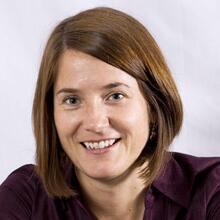Artists from the Gulf Coast know a thing or two of what Pope Benedict meant when a year ago he rhetorically asked artists in the Sistine Chapel: “What is capable of restoring enthusiasm and confidence, what can encourage the human spirit to rediscover its path, to raise its eyes to the horizon, to dream of a life worthy of its vocation -- if not beauty?
Musicians, photographers, filmmakers, and visual and performing artists have been essential and often unsung (pardon the pun) midwives of the recovery process of the last five years, precisely because they have insisted on the restorative powers of beauty.
Some of these folks brought beauty to the front lines of disaster relief, attending to the emotional and spiritual pain of those immediately affected by the tragedy. Consider a collaborative project between The DreamYard Project in the Bronx and a charter school in Mississippi that helped elementary students to make kites out of the debris of the storm and then flew them on a Mississippi beach in November `05.
Other artists continue the arduous task of using the arts to help us swallow the bitter pill Katrina presents to our national identity by interrogating the myths that continue to swirl around it. Photographers Stanley Greene and Kadir van Lohuizen have put together a mobile gallery of images of the Gulf Coast over the past five years, Those Who Fell Through the Cracks, which is exhibited on the sides of a truck that is currently making its way from Houston to the Lower 9th Ward. Natasha Trethewey’s memoir, Beyond Katrina: A Meditation on the Mississippi Gulf Coast, has weaved memories of the storm them into a living personal history.
And while bright-light names such Spike Lee (When the Levees Broke [A Requiem in Four Acts] and his most recent If God is Willing and da Creek Don’t Rise) or David Simon and Eric Overmyer (Treme on HBO) rightly highlight the vibrant culture in New Orleans in order to resist the stigma of victimhood, many lesser known directors have used their medium to explore Katrina’s impact from overlooked perspectives, as is the case with an independent film, Katrina’s Son.
In the years since the storm, artists have implicitly drawn a connection between the arts and justice when it comes to building relationships among people, which are the ultimate levy against social disasters. Generation Pulse, an online gallery and journal for young people affected by the storm launched in 2005 by Belle Liang, a Boston College adolescent psychologist, has grown into an extensive site that uses that art to spark action on a variety of social justice issues. Actors connected with the Goodman Theater in Chicago have used their upcoming production of The True History of the Johnston Flood as a platform for collaborating with theater students at Southern University in order to write and produce Katrina’s Footprints, an ethnography of three families returning to their homes in the years after the storm. And then there’s Shades of Gray, “the New Orleans interracial gospel choir,” out of Loyola University of New Orleans formed in 2001 who have worked through song and networking for the past 5 years to bring home many of their members exiled by the storm.
As we move further away from August `05, and as new social disasters wash up on the shores of the Gulf Coast, the artists of the region continue to serve a prophetic role. Many, like jazz great Terrance Blanchard and his A Tale of God’s Will (A Requiem for Katrina), produced by Religion and Ethics Newsweekly, haunt us with promises not kept, the distance yet to travel, and dreams that are still realized. But the beauty of their work also nags us with a sense of hope that we are capable of continuing the work of restoration.
Maureen O'Connell




















